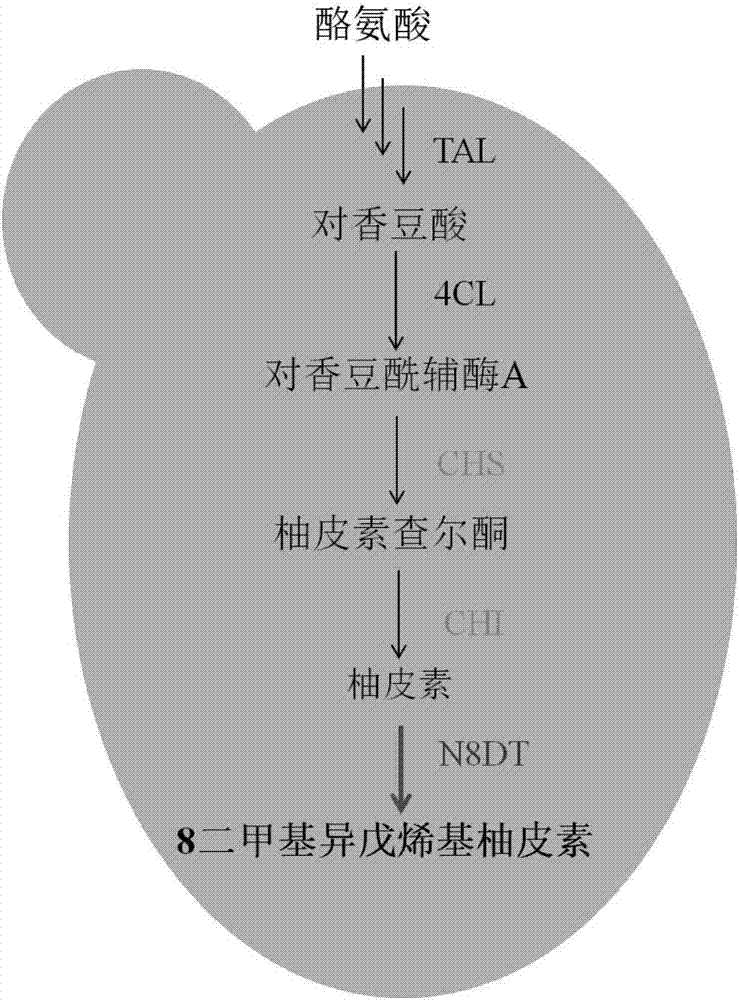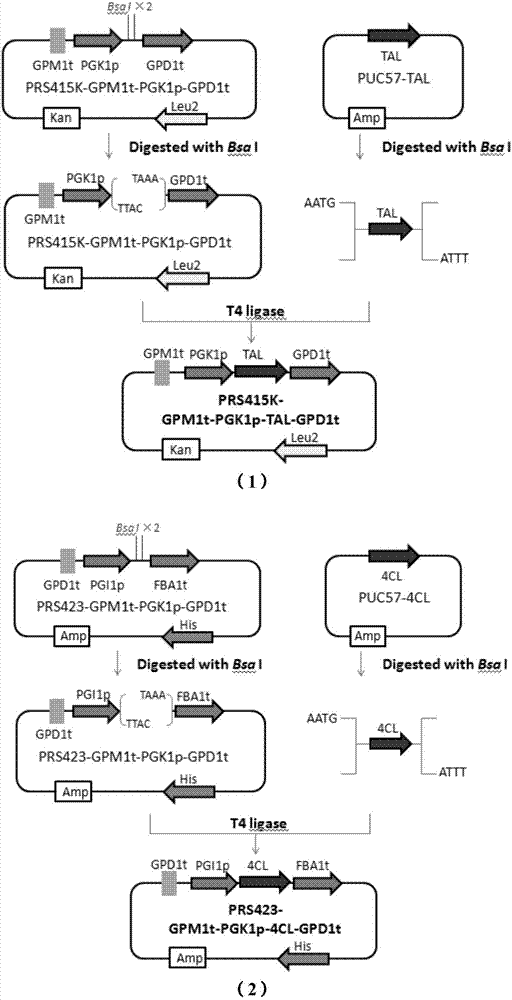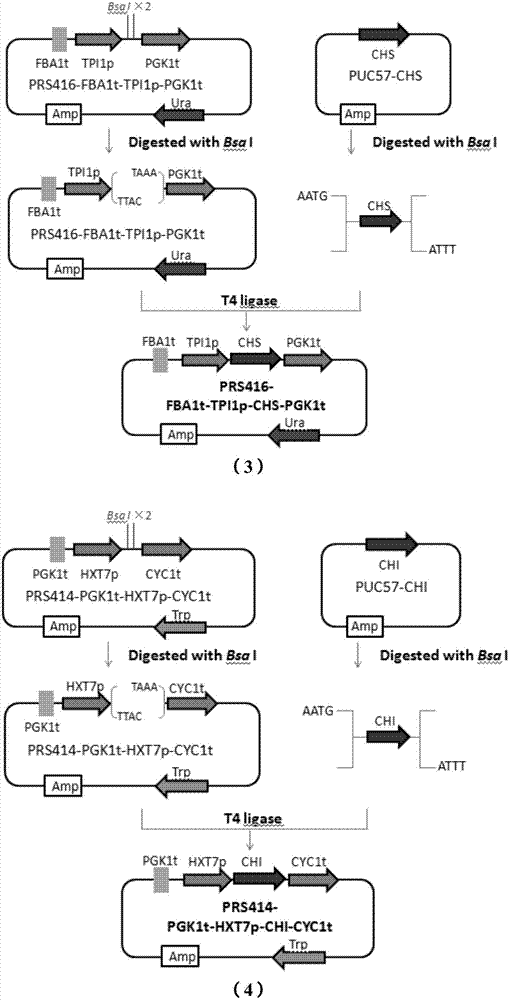Recombinant saccharomyces cerevisiae as well as construction method and application thereof
A technology for Saccharomyces cerevisiae and a construction method, applied in the field of genetic engineering, can solve the problems of low utilization rate of yeast cells, high cost of naringenin and the like, and achieve the effects of low cost, good economic benefit and few by-products
- Summary
- Abstract
- Description
- Claims
- Application Information
AI Technical Summary
Benefits of technology
Problems solved by technology
Method used
Image
Examples
Embodiment 1
[0045] Embodiment 1, the construction of the recombinant Saccharomyces cerevisiae strain that produces naringenin
[0046] 1. Acquisition of exogenous functional gene elements
[0047] The exogenous genes are the key enzymes TAL, 4CL, CHS and CHI genes for the synthesis of naringenin: the source of the TAL gene is Rhodosporidium toruloides (R. toruloides), referred to as Sc_TAL. The source of the 4CL gene is parsley (petroselinum crispum), referred to as Sc_4CL. Gene sources of CHS include Arabidopsis thaliana, grape (Vitis vinifera), Polygonum cuspidatum, marine bacteria (Rhodopirellula baltica), soybean (Glycine max), etc., which are abbreviated as Sc_CHS1, Sc_CHS2, Sc_CHS3, Sc_CHS4, Sc_CHS7, the gene sources of CHI include soybean 1 (Glycine max), soybean 2 (Glycine max), tangerine (Citrus unshiu), Arabidopsis thaliana (Arabidopsis thaliana), corn (Zea mays), peanut (Arachis hypogaea), etc., abbreviated in order Sc_CHI1, Sc_CHI2, Sc_CHI4, Sc_CHI5, Sc_CHI6, Sc_CHI7. The s...
Embodiment 2
[0094] Example 2, Expression of exogenous gene N8DT in recombinant Saccharomyces cerevisiae to synthesize 8-dimethylprenylnaringenin
[0095] 1. Acquisition of exogenous functional gene element N8DT
[0096] The exogenous gene is the key enzyme N8DT for 8-dimethylprenylnaringenin: the selected one is naringenin prenyltransferase (N8DT) from Sophora flavescens, the specific gene The sequence is shown in SEQ ID No:14. The above-mentioned genes are artificially synthesized after Saccharomyces cerevisiae codon optimization.
[0097] 2. Construction of a recombinant Saccharomyces cerevisiae strain producing 8-prenylnaringenin
[0098] The obtained exogenous N8DT gene was digested with BsaI and connected to the module library pRS425K-ENO2t-PDC2p-GPM2t plasmid (available for free at http: / / synbioml.org / ) using T4 ligase, and the recombinant The plasmid was transformed into the SyBE_Sc02050031 chassis strain, using Sc-LEU solid plate (synthetic yeast nitrogen source YNB 6.7g / L, glu...
PUM
 Login to View More
Login to View More Abstract
Description
Claims
Application Information
 Login to View More
Login to View More - R&D
- Intellectual Property
- Life Sciences
- Materials
- Tech Scout
- Unparalleled Data Quality
- Higher Quality Content
- 60% Fewer Hallucinations
Browse by: Latest US Patents, China's latest patents, Technical Efficacy Thesaurus, Application Domain, Technology Topic, Popular Technical Reports.
© 2025 PatSnap. All rights reserved.Legal|Privacy policy|Modern Slavery Act Transparency Statement|Sitemap|About US| Contact US: help@patsnap.com



